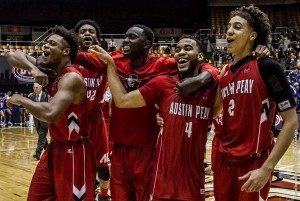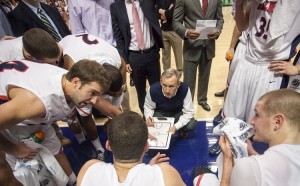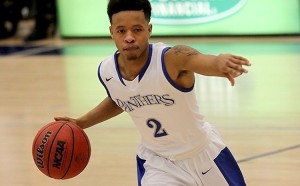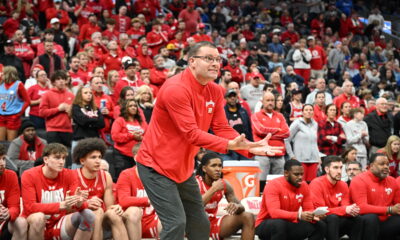Uncategorized
Grading the OVC – Part One
(St. Louis, MO) – The surprising Ohio Valley Conference continues to prove it’s worth in postseason basketball. If not in the NCAA Tournament, the OVC is making an impression in the three-letter tournaments.
We’re beginning our offseason evaluation of the individual teams in the OVC. These grades are based on how the teams performed compared to preseason expectations, so a team with a reasonably good record could have a lower grade than a team with fewer wins.
Our grade book has the teams listed in alphabetical order.
Austin Peay – B +
The Governors were picked to finish sixth in the West Division and finished fourth. Common opinion holds that the West is weaker than the East Division, so you could reasonably conclude that the prognosticators were picking them as the worst team in the league (12th of 12).
Instead, Dave Loos’ team finished eighth overall and fought their way into Music City Madness. Not content to earn a participation ribbon, all the Governors did was become the first eighth seed in OVC Tournament history to win the championship!
APSU (18-18, 7-9) improved their win total by ten over the previous season, and those 18 wins were the most by a Governors’ team in five years.
 Young players like Josh Robinson and Jared Savage grew and developed as the season wore on and were key figures during the late season renaissance, but senior Chris Horton was the team MVP and in my opinion, the outstanding player in the OVC.
Young players like Josh Robinson and Jared Savage grew and developed as the season wore on and were key figures during the late season renaissance, but senior Chris Horton was the team MVP and in my opinion, the outstanding player in the OVC.
Horton led the OVC with averages of 18.8 points and 12 rebounds, and produced 25 double-doubles, good for fourth best nationally. The 6-8 post player led the nation in offensive rebounding and became the ninth player in NCAA history to score 1,700 points, grab 1,200 rebounds and block 300 shots.
Robinson a 6-3 sophomore is a star in the making. He finished sixth in scoring (16.9), fifth in free throw percentage (.834), and ninth in converted 3-pointers, while logging the fourth most minutes in ‘the O’.
Belmont Bruins – C +
How can the division winner receive such a low grade? Rick Byrd’s team crafted another fine season, but I think the Bruins would agree with a disappointing mark. They were picked to win the East Division and accomplished that task, but with four starters returning from the previous season, winning 20 games (their lowest output in the past six seasons), failing to win the OVC Tournament and missing the ‘Big Dance’ is subpar for this perennial conference champ.
Belmont struggled on the defensive end. The Bruins led the league in scoring but were 11th in scoring defense and the inability to stop opponents cost them dearly. In the National Invitation Tournament they scored 84 points, but lost by 11. In their semifinal loss to Austin Peay they scored over 90 points and fell to the surging Governors.
(A side note, I’m not sure the 1996 Bulls would have defeated Austin Peay that first weekend of March. That team was playing with a passion rarely seen as they played their hearts out for Loos’ granddaughter Rhyan who is battling cancer.)
 The inability to stop the opponent is one thing, but the Bruins finishing dead last in ‘the O’ in steals is quite another.
The inability to stop the opponent is one thing, but the Bruins finishing dead last in ‘the O’ in steals is quite another.
Belmont’s legendary ability to create offense was on full display all year. They led the OVC in scoring, assists and field goal percentage. OVC Player of the Year Evan Bradds was outstanding. The 6-7 junior was fourth in scoring (17.6) and second in rebounding (9.2). Oh yeah, and he LED THE NATION in field goal percentage (.714). He was brilliant.
Preseason POY Craig Bradshaw was solid scoring 16.4 points per game, while leading the OVC in 3-pointers. Speaking of stars in the making, sophomore Austin Luke led ‘the O’ in assists (6.3).
Eastern Illinois – C
A terrible start to the season, the Panthers lost nine of their first 11 games, doomed this season to mediocrity. EIU was picked to finish third in the West and matched last season’s third place finish and 9-7 OVC record, but losing five more games than the year before, drops them to the grade of C.
Jay Spoonhour’s team didn’t give up. They won nine of their final 14 games including three road wins. Prior to that flourish they had prevailed one time away from Lantz Arena.
The previous season had seen the Panthers winning their first ever Division 1 postseason game, and though they lost their best post player when Chris Olivier transferred, continued growth was expected. With so many newcomers to the program, it took a while to jell.
Holdovers Trae Anderson and Cornell Johnston led the way. The two St. Louis products improved their numbers from the previous season as Anderson averaged over 14 points and five rebounds per game. Johnston became a double figure scorer (11.0) and was second to Belmont’s Luke in assists (5.7).
Juco transfers Demetrius McReynolds (12.1) and A.J. Riley (9.9) blended nicely with incoming freshmen Casey Teson, Patrick Muldoon and Marshawn Blackmon, all of whom played in every EIU game. In fact, among the top eight scorers from last year (barring transfers), Spoonhour will lose only Anderson.
It wasn’t a bad year for the Charleston, Illinois based school, they just didn’t take a step forward.
Eastern Kentucky – D
First year head coach Dan McHale did not have a successful season in Richmond. Replacing Jeff Neubauer wasn’t as easy as it looked. EKU was coming off three straight 20-win seasons and some ready made transfers to fill the gaps left by the graduation of Eric Stutz, Corey Walden and Timmy Knipp.
The Colonels were picked to finish third in the East Division and were overcome by the revivals at Tennessee State and Tennessee Tech, and finished fifth. Both of those teams improved dramatically and EKU did not.
They started the season 6 and 1, but went just 6 and 10 in the OVC and finished with a sub .500 (15-16) record for their lowest win total in five years. Ironically they were better on the road (4-4) than at home (2-6) in OVC play.
McHale’s team wasn’t without bright spots. 6-8 freshman Nick Mayo seemingly came out of no where to win the ‘Freshman of the Year’ award, was a first team all-conference player, landed on the ‘All-Newcomer Team’ and was amongst the league leaders in scoring, field goal percentage, free throw percentage and blocked shots.
Mayo was joined on the ‘newcomer’ team by Jarelle Reischell. The 6-7 senior from Germany finished third in the OVC in scoring. Junior JaVontae Hawkins joined Reischell as a second team all-conference player, and was fifth in scoring.
Speaking of scoring, that’s what the Colonels could do, but so could their opponents. EKU was second to Belmont in points per game (80.5), but last in scoring defense at 79.1. So there was no margin for error. They led the OVC in 3-point percentage, and were worst at defending that same line.
Do Good














